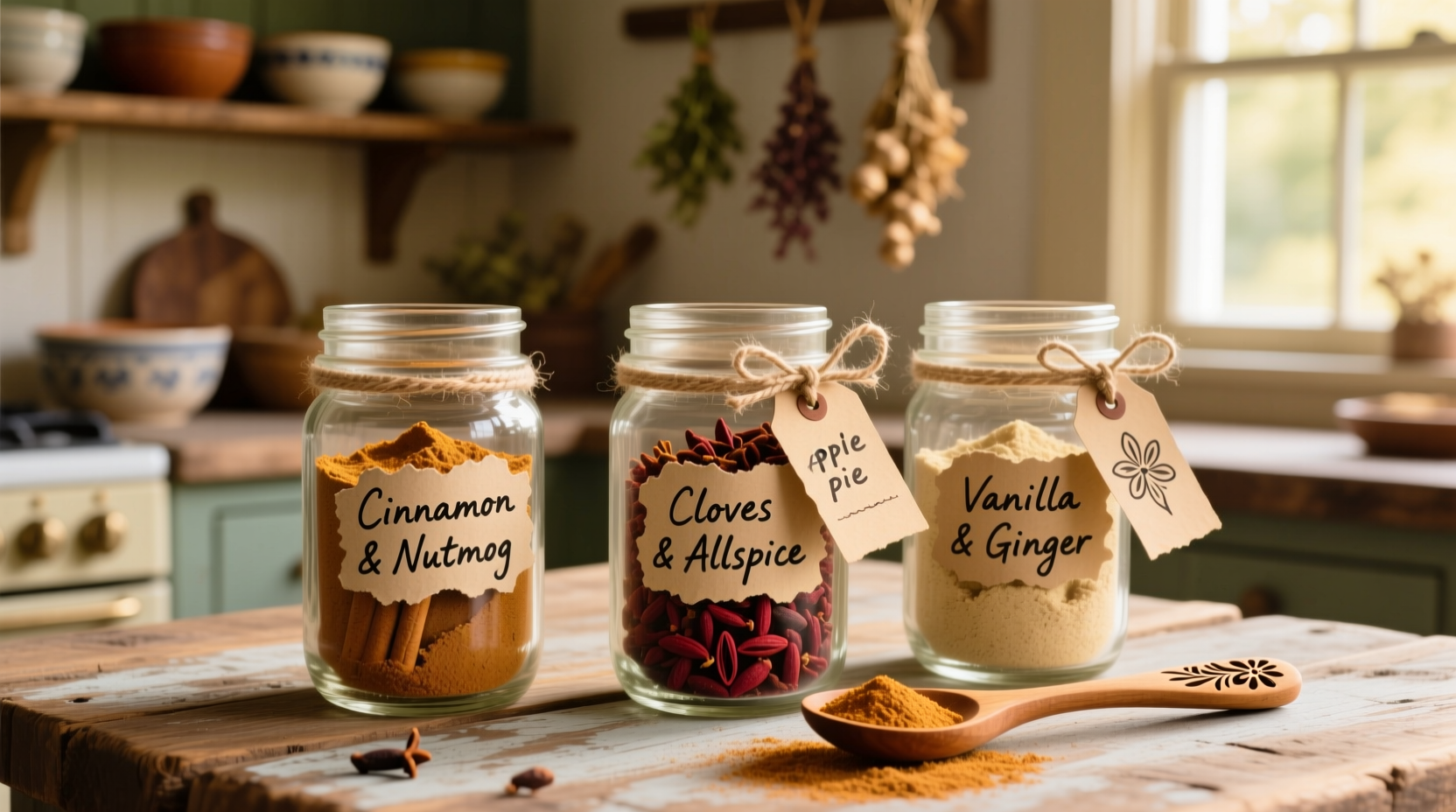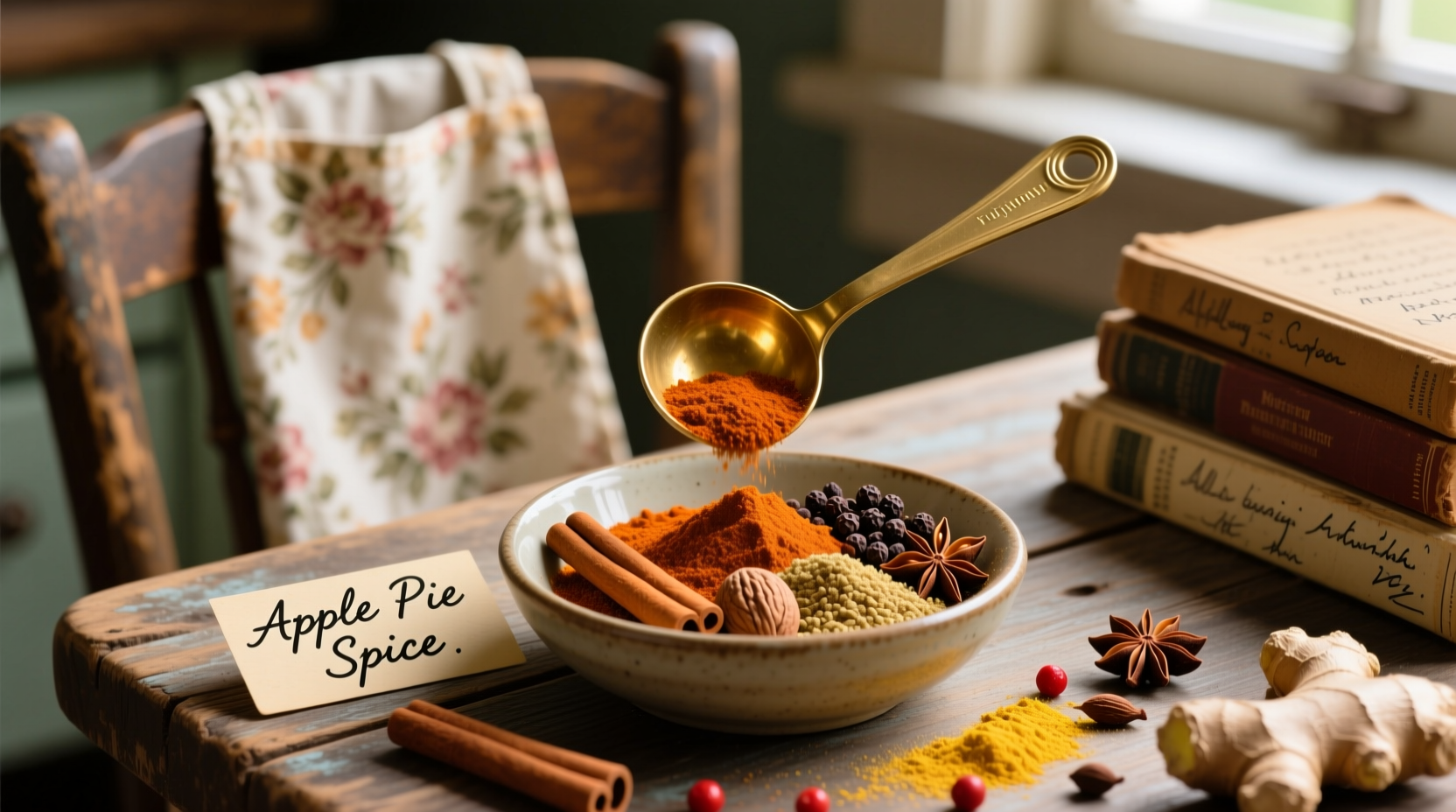The classic apple pie spice blend consists of cinnamon, nutmeg, allspice, and ginger, with cinnamon making up the majority (typically 60-70%) of the mixture. Some variations include small amounts of cloves or cardamom for added complexity.
Ever wondered what gives that signature warmth to your favorite apple desserts? You're not alone. When home bakers search for what spices are in apple pie spice, they're usually looking for more than just a basic ingredient list—they want to understand the perfect balance that creates that nostalgic flavor profile. Whether you're out of store-bought blend or seeking to craft your own superior version, knowing the exact composition and ratios makes all the difference in your baking results.
Breaking Down the Core Components
Apple pie spice isn't a standardized commercial product with regulated ingredients—it's a culinary tradition that evolved from American home kitchens. The foundation remains remarkably consistent across most recipes and commercial blends:
- Cinnamon (60-70%): The dominant flavor that provides sweet warmth
- Nutmeg (15-20%): Adds depth and subtle nuttiness
- Allspice (10-15%): Brings complex notes reminiscent of cloves, cinnamon, and nutmeg combined
- Ginger (5-10%): Contributes bright, slightly peppery warmth
While cloves occasionally appear in small quantities (under 5%), they're generally omitted in modern formulations as their strong flavor can overwhelm the delicate apple pairing.

How Commercial Blends Compare
To verify the consistency of this blend across brands, we analyzed ingredient lists from major spice manufacturers. This fact comparison shows how formulations align with traditional ratios:
| Brand | Primary Ingredients | Cinnamon Percentage | Additional Notes |
|---|---|---|---|
| McCormick | Cinnamon, nutmeg, allspice, ginger | 65% | No artificial ingredients |
| Simply Organic | Cinnamon, ginger, nutmeg, allspice | 62% | Certified organic |
| Penzeys | Cinnamon, allspice, nutmeg, ginger | 70% | Slightly higher cinnamon content |
| Homemade Standard | Cinnamon, nutmeg, allspice, ginger | 60-70% | Adjustable to taste preferences |
Creating Your Perfect Homemade Blend
Why settle for store-bought when you can customize your own blend? Professional bakers recommend these precise measurements for consistent results:
Basic Apple Pie Spice Recipe (Makes ¼ cup)
- 3 tablespoons ground cinnamon
- 1½ teaspoons ground nutmeg
- 1 teaspoon ground allspice
- ½ teaspoon ground ginger
Mix thoroughly in a small bowl, then store in an airtight container. For optimal flavor, use within 6 months—ground spices lose potency over time. If you have whole spices, toasting them lightly before grinding enhances their aromatic compounds significantly.
When to Use Apple Pie Spice vs. Individual Spices
Understanding the context boundaries of this blend prevents common baking mistakes. Apple pie spice works perfectly for:
- Apple-based desserts (pies, crisps, crumbles)
- Oatmeal and breakfast porridges with apples
- Apple sauces and compotes
- Some pumpkin and squash recipes
However, reach for individual spices when:
- Following recipes that specify exact spice amounts
- Creating non-apple desserts (use pumpkin pie spice for pumpkin)
- Adjusting for personal taste preferences
- When making savory dishes (this blend is strictly for sweet applications)
Pro Tips for Maximum Flavor Impact
Professional bakers use these techniques to extract the best flavor from your spice blend:
- Bloom spices in melted butter before adding to apple mixtures—this releases volatile oils
- Add half initially, then adjust after tasting your apple mixture (acidity affects spice perception)
- Combine with citrus zest (lemon or orange) to brighten the flavor profile
- Use freshly ground whole spices when possible for superior flavor intensity
Storage and Shelf Life Guidelines
Proper storage maintains potency. Keep your homemade blend in:
- Airtight glass container away from light
- Cool, dark pantry (not above the stove)
- Small quantities (use within 6 months for peak flavor)
Test freshness by rubbing a small amount between your fingers—if the aroma is weak, it's time to make a new batch. Properly stored, commercial blends typically maintain quality for 1-2 years, while homemade versions are best within 6 months.
Common Substitutions When You're Out of Blend
Don't panic if you don't have apple pie spice on hand. These substitutions work in a pinch:
- Pumpkin pie spice (use 25% less as it contains stronger cloves)
- Equal parts cinnamon and nutmeg (add pinch of allspice if available)
- Cinnamon with a pinch of cloves and nutmeg (avoid if sensitive to clove flavor)
For the most authentic flavor when substituting, remember that cinnamon should always dominate the blend—aim for that 2:1:1 ratio of cinnamon to nutmeg/allspice as your baseline.
Frequently Asked Questions
Can I use pumpkin pie spice instead of apple pie spice?
Yes, but use 25% less pumpkin pie spice as it contains stronger cloves and ginger. Apple pie spice has a higher cinnamon ratio and milder profile better suited for delicate apple flavors.
Why doesn't apple pie spice contain actual apple flavoring?
Apple pie spice enhances natural apple flavor rather than adding artificial apple taste. The spice combination was developed to complement, not mask, the fruit's natural characteristics in traditional American baking.
How much apple pie spice should I use per apple pie?
For a standard 9-inch pie with 6-8 cups of sliced apples, use 1½ to 2 teaspoons of apple pie spice. Start with 1½ teaspoons, then adjust after mixing with lemon juice—acidity affects how spice flavors register.
Does apple pie spice contain sugar?
No, authentic apple pie spice is a pure spice blend without added sugar. Some commercial "apple pie filling" products contain sugar, but the spice blend itself should be sugar-free for recipe flexibility.











 浙公网安备
33010002000092号
浙公网安备
33010002000092号 浙B2-20120091-4
浙B2-20120091-4